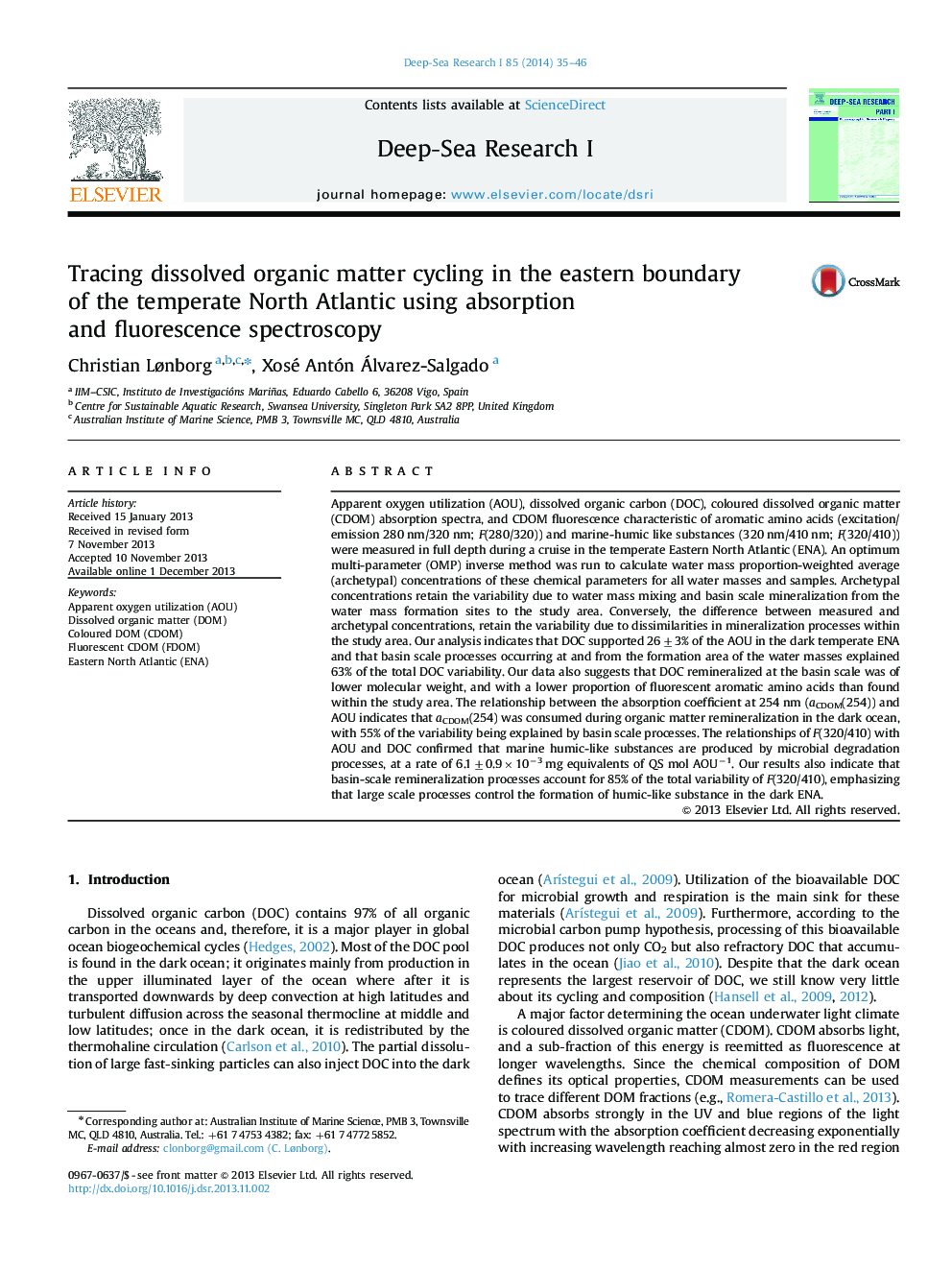| کد مقاله | کد نشریه | سال انتشار | مقاله انگلیسی | نسخه تمام متن |
|---|---|---|---|---|
| 4534549 | 1626345 | 2014 | 12 صفحه PDF | دانلود رایگان |
• DOC supported 26±3% of the AOU in the dark temperate eastern North Atlantic ocean.
• Basin-scale mineralization processes controlled the variability of DOC and humic-like substance.
• DOC mineralized at the basin scales was of lower molecular weight and had a lower proportion of protein-like substances.
• Humic-like substances were produced as a by-product of microbial degradation with a higher conversion efficiency at the local scale.
Apparent oxygen utilization (AOU), dissolved organic carbon (DOC), coloured dissolved organic matter (CDOM) absorption spectra, and CDOM fluorescence characteristic of aromatic amino acids (excitation/emission 280 nm/320 nm; F(280/320)) and marine-humic like substances (320 nm/410 nm; F(320/410)) were measured in full depth during a cruise in the temperate Eastern North Atlantic (ENA). An optimum multi-parameter (OMP) inverse method was run to calculate water mass proportion-weighted average (archetypal) concentrations of these chemical parameters for all water masses and samples. Archetypal concentrations retain the variability due to water mass mixing and basin scale mineralization from the water mass formation sites to the study area. Conversely, the difference between measured and archetypal concentrations, retain the variability due to dissimilarities in mineralization processes within the study area. Our analysis indicates that DOC supported 26±3% of the AOU in the dark temperate ENA and that basin scale processes occurring at and from the formation area of the water masses explained 63% of the total DOC variability. Our data also suggests that DOC remineralized at the basin scale was of lower molecular weight, and with a lower proportion of fluorescent aromatic amino acids than found within the study area. The relationship between the absorption coefficient at 254 nm (aCDOM(254)) and AOU indicates that aCDOM(254) was consumed during organic matter remineralization in the dark ocean, with 55% of the variability being explained by basin scale processes. The relationships of F(320/410) with AOU and DOC confirmed that marine humic-like substances are produced by microbial degradation processes, at a rate of 6.1±0.9×10−3 mg equivalents of QS mol AOU−1. Our results also indicate that basin-scale remineralization processes account for 85% of the total variability of F(320/410), emphasizing that large scale processes control the formation of humic-like substance in the dark ENA.
Journal: Deep Sea Research Part I: Oceanographic Research Papers - Volume 85, March 2014, Pages 35–46
